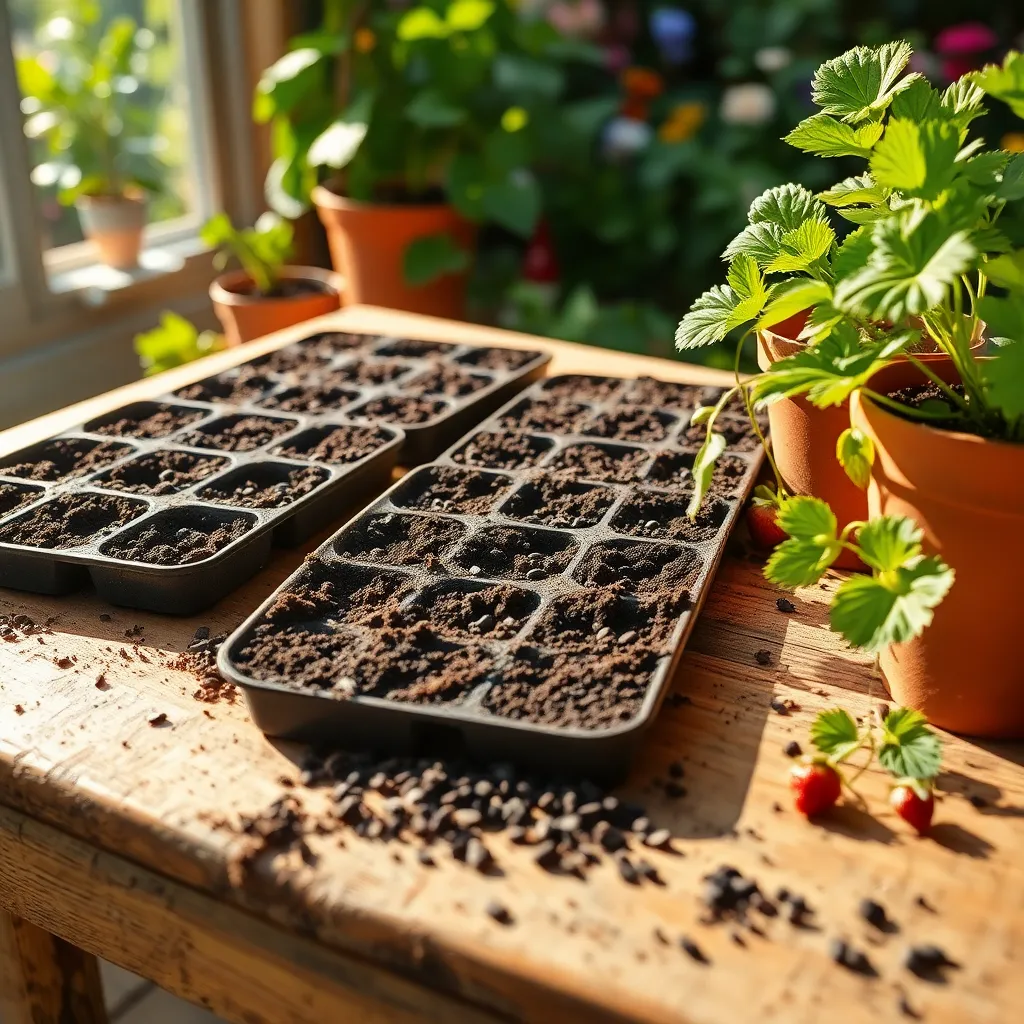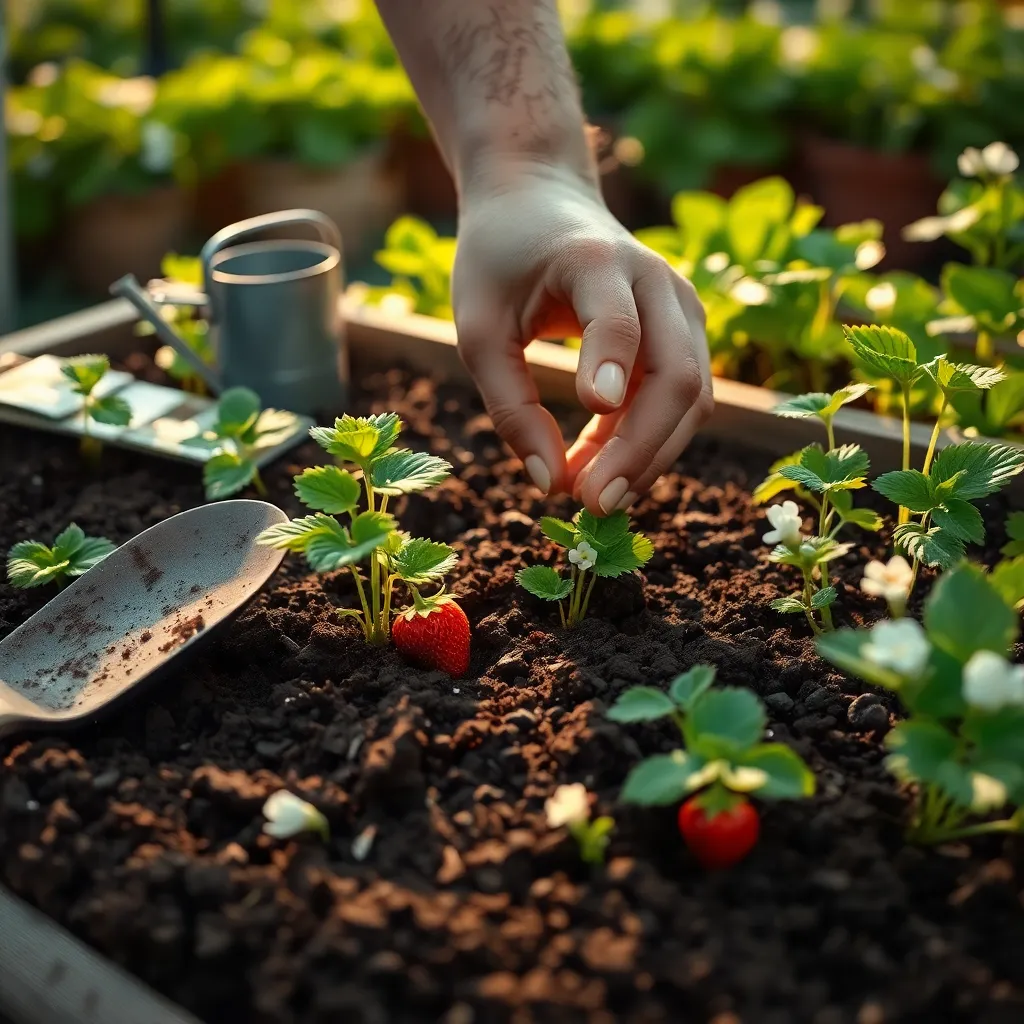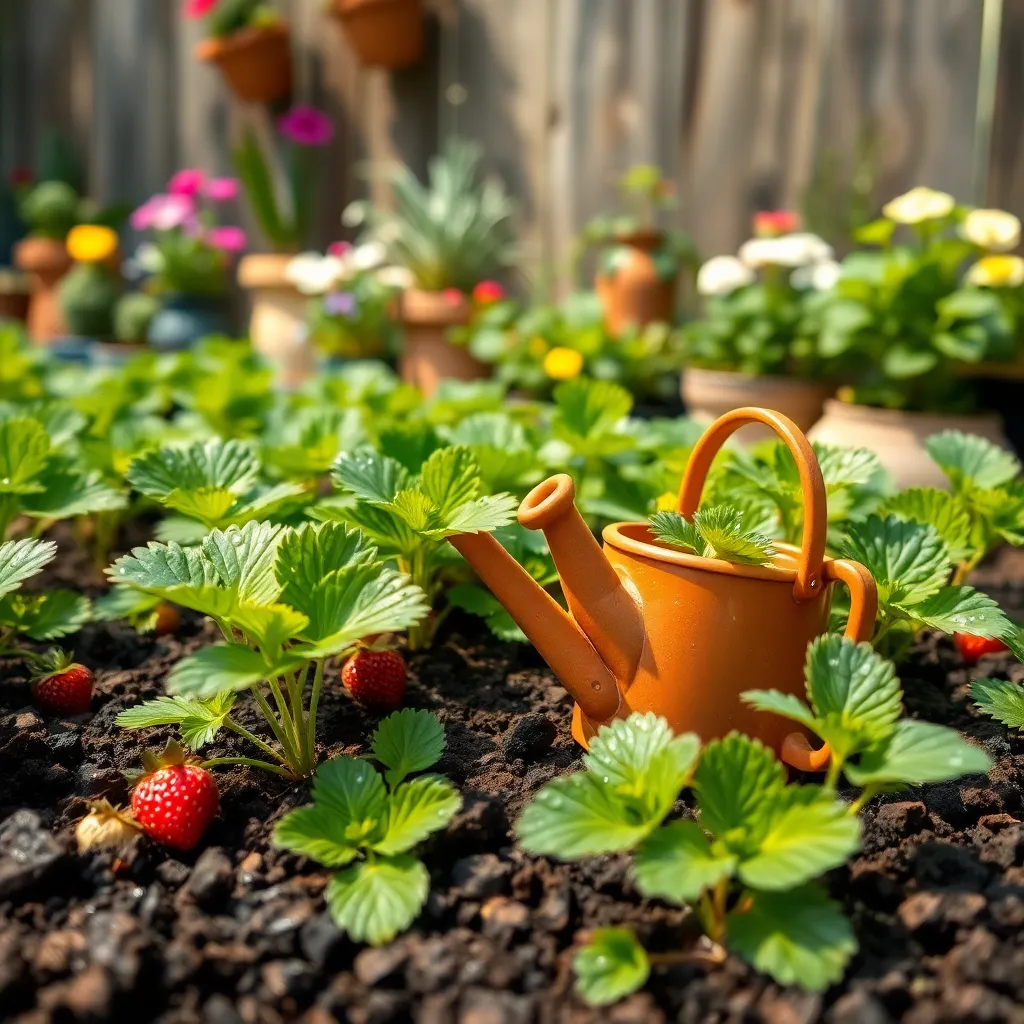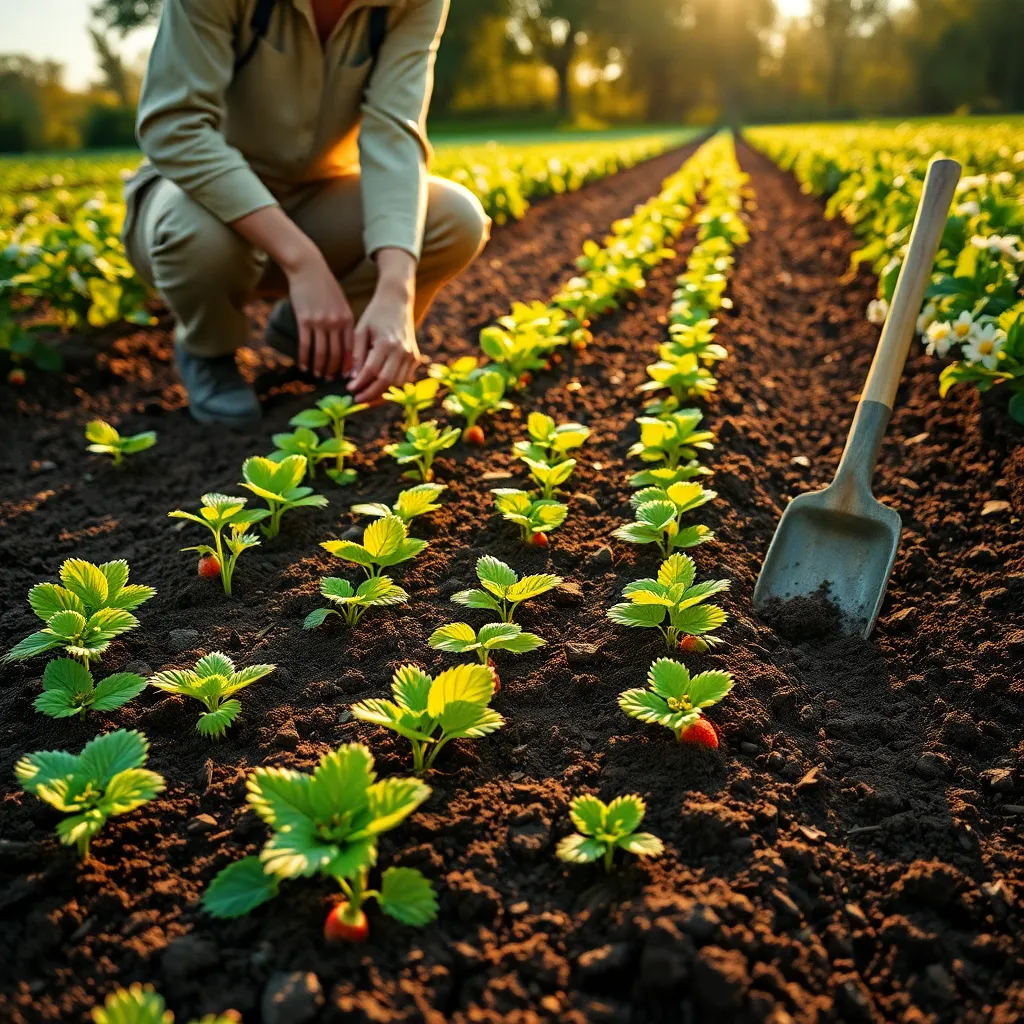There’s something truly magical about growing strawberries from seed, watching the tiny specks transform into lush plants that promise a bountiful harvest. Whether you’re just starting your gardening journey or have years of experience under your belt, nurturing strawberries from seeds can be a rewarding and enriching endeavor that connects you deeply with the process of life itself.
For beginners, diving into seed-starting might seem daunting, but fear not—this guide is crafted to make the process feel as simple as pie. Seasoned gardeners will find joy in the nuances of seed selection and the opportunity to experiment with different strawberry varieties, adding a delightful twist to their gardening repertoire.
In this article, you’ll discover practical tips on selecting the best seeds, preparing your soil, and creating the perfect growing environment for your strawberries. We’ll walk you through each step of the journey, ensuring you feel confident and capable of cultivating your very own strawberry patch. So, roll up your sleeves and get ready to embark on a fruitful adventure that will bring the sweet taste of summer right to your garden.
Select Quality Strawberry Seeds

Choosing the right strawberry seeds is crucial for a successful harvest. Look for seeds labeled as high-yielding, disease-resistant, and suited to your climate zone.
Begin by selecting a reputable supplier to ensure you receive viable and quality seeds. Certified organic seeds can be a great choice if you are aiming for a healthier, chemical-free garden.
Consider the type of strawberry you want to grow—June-bearing varieties produce a single heavy crop, while everbearing and day-neutral varieties fruit throughout the season. This decision depends on your personal preference for harvest timing and yield.
To further increase success, opt for seeds from strawberry plants known for their flavor and hardiness. Research varieties that thrive in similar conditions to your garden, especially regarding sunlight, soil type, and temperature range.
Prepare Seed Starting Trays

To begin your strawberry seed journey, make sure you have clean seed starting trays ready. It’s essential to disinfect the trays by soaking them in a solution of one part bleach to nine parts water, which will help prevent diseases.
Next, fill the trays with a high-quality seed starting mix, which should be light and well-draining. A mixture specifically designed for seeds often contains peat moss, vermiculite, and perlite, offering the perfect environment for germination.
Moisten the soil gently before sowing the seeds to ensure it is evenly damp but not waterlogged. You can use a spray bottle to lightly mist the surface, which prevents disturbing the soil structure.
Once the trays are prepped, sow the strawberry seeds by gently pressing them into the soil surface. Cover them with a thin layer of soil, about 1/8 inch deep, as they need some light to germinate.
Sow Seeds with Care

When sowing strawberry seeds, it is crucial to handle them with care due to their small size. Begin by gently scattering the seeds over the surface of the prepared trays, ensuring they are evenly distributed to promote uniform growth.
For best results, lightly press the seeds into the soil without completely burying them. Strawberry seeds require light to germinate, so covering them with soil can hinder their growth and should be avoided.
Water the seeds carefully to avoid displacing them, using a misting spray to maintain soil moisture without creating puddles. Consistent moisture is key, so check the trays daily and mist as needed to keep the soil damp but not soggy.
Maintain a warm environment for the seeds to germinate, ideally between 65°F to 75°F (18°C to 24°C). If you have access to a heat mat, it can help maintain this temperature range, encouraging faster and more reliable germination.
Provide Consistent Moisture

Once you’ve sown your strawberry seeds, providing consistent moisture is crucial for their successful germination. Strawberry seeds need to be kept in a moist environment, as dryness can halt their growth before they even begin to sprout.
Use a spray bottle to gently mist the soil, ensuring it remains damp but not waterlogged. Over-watering can lead to mold growth and seed rot, so aim for a balanced moisture level that supports healthy seed development.
Consider placing a clear plastic cover over your seed trays to maintain humidity, which is especially helpful if you’re gardening in a drier climate. This cover creates a mini greenhouse effect that helps retain moisture while still allowing light to reach the seedlings.
For those with more experience, integrating a capillary mat beneath your seed trays can provide a consistent moisture supply without needing constant attention. This technique allows the soil to draw up water as needed, giving your strawberry seeds a stable environment to thrive.
Transplant Seedlings Outdoors

When your strawberry seedlings have developed at least three true leaves, they are ready to be transplanted outdoors. This usually occurs about six to eight weeks after germination, depending on the growing conditions and seed variety.
To ensure a successful transition, harden off your seedlings by gradually exposing them to outdoor conditions over a week. Start by placing them in a sheltered location for a few hours each day, gradually increasing their time outside and exposure to direct sunlight.
Choose a location with well-draining soil and plenty of sunlight, as strawberries need at least six to eight hours of direct sunlight daily. Before planting, amend the soil with compost to enhance its fertility and texture, ensuring that your strawberries have the nutrients they need to thrive.
Space your strawberry plants about 12 to 18 inches apart to allow for adequate air circulation and room for growth. Plant them at the same soil depth they were in their pots, ensuring the crown is at soil level to prevent rot.
Water the newly transplanted seedlings thoroughly to help settle the soil around their roots. Once established, maintain consistent moisture levels by watering regularly, ideally in the morning to allow foliage to dry by evening, minimizing the risk of fungal diseases.
Conclusion: Growing Success with These Plants
In nurturing a successful relationship, much like growing strawberries from seeds, patience and care are paramount. First, understand the importance of laying a strong foundation, whether it’s in soil or communication. Second, prioritize consistent care by watering your relationship with attention and understanding. Third, recognize the need for sunlight and time—both relationships and strawberries thrive with warmth and patience. Fourth, be prepared to weed out negativity and obstacles that hinder growth. Finally, celebrate the fruits of your labor, rejoicing in the sweet rewards of a flourishing connection.
To put these concepts into action, take a moment today to identify one area in your relationship that could use a little extra TLC, and commit to improving it. Whether it’s listening more intently or planning a special date, every small effort counts.
Bookmark this article for future reference, ensuring these insightful strategies are always at your fingertips. Remember, by nurturing your relationship with the same care you’d give to a budding strawberry plant, you’ll cultivate a bond that’s both fruitful and enduring. Your relationship success story is just beginning—take the first step today and watch it thrive.
